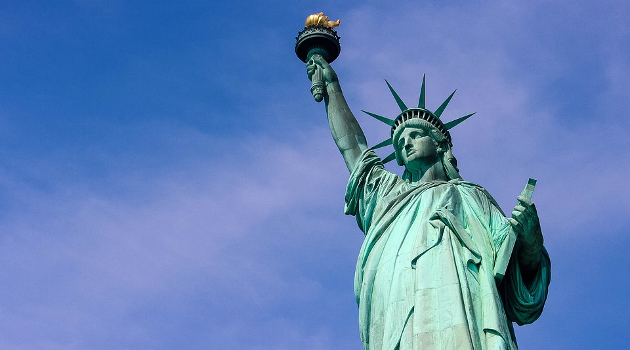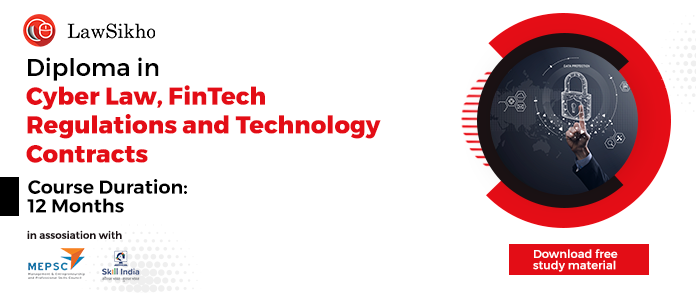This article is written by Yash Kapadia. In this article, we provide a brief as well as analyse the arguments and judgement of the US Supreme Court relating to immunity of US presidents.
Table of Contents
Introduction
Trump v. Vance (2020) is supposed to be considered as a landmark case that arose after a subpoena was issued in 2019 by the District Attorney of the county of New York, Cyrus Vance Junior against Mazars, the personal accounting firm of the then President, Donald Trump.
Following the receipt of the said subpoena, Donald Trump sued the District Attorney and Mazars in his personal capacity with the defence that a sitting President of the United States is absolutely immune from state criminal processes under Article II and the Supremacy Clause.
This case was then brought before the Supreme Court which then pronounced its order on the question of whether the President of the United States has absolute immunity or not.
Background
Donald J. Trump, while indicating his intent to run for the President of the United States (US), in 2016, stated that he would release his tax returns but after winning the elections in 2017 he did not do so. The Ways and Means Committee requested the Internal Revenue Service (IRS) to conduct its routine tax audit of Trump’s returns for the last six years but even the IRS did not comply with this request.
District Court
A subpoena was sent to Mazars, the accountants of President Trump by the District Attorney of the county of New York, Cyrus Vance Junior (Vance) in order to check on Trump’s tax returns.1 On receiving the said subpoena, Trump filed a suit against both Vance and Mazars in the District Court for injunctive relief to have the subpoenas blocked on the grounds that the President of the United States enjoys absolute immunity from any criminal process against him of any kind during his term.
The District Court dismissed the suit whilst relying on Younger v. Harris, 1971 wherein it was held that federal courts would not enjoin pending state criminal prosecutions except under extraordinary circumstances where there is a danger of irreparable loss and a threat to a plaintiff’s federally protected rights that cannot be eliminated by their defense against a single prosecution. Trump was, therefore, directed to comply with the subpoena issued to him pending the ruling of the Second Circuit of the US Court of Appeals.
Second Circuit
The Second Circuit also affirmed the District Court Order and held that any presidential immunity from state criminal process would not bar the enforcement of a subpoena like in the present case. The Circuit held that the President failed to prove that he was likely to prevail on or even raise serious questions that go into the merits of his immunity claim and therefore he would not be entitled to the prayed preliminary injunctive relief. It was concluded that “presidential immunity does not bar the enforcement of a state grand jury subpoena directing a third party to produce non-privileged material, even when the subject matter under investigation pertains to the President.”2
Supreme Court
Trump decided to file a petition in the US Supreme Court on the Second Circuit’s ruling. Oral arguments were held through teleconferencing due to COVID-19 restrictions on 12th May 2020. The following were the submissions, issues and judgement delivered thereafter.
- Submissions by President Trump
- The line of submissions started with the view that the Supremacy Clause gave a sitting President of the US absolute immunity from any state criminal subpoenas. This view was backed by the reason that complying with such subpoenas would only lead to affecting the performance of the President complying to functions enlisted under Article II.
- The President further submitted that a state grand jury subpoena asking for personal records of a sitting President should meet a heightened standard of need if it is to be allowed.3 His above categorical argument focussed on three burdens i.e. diversion, stigma, and harassment.
- It was contended that complying with state criminal subpoenas would only distract the Chief Executive of the country from his defined duties. The case of Nixon v. Fitzgerald, 1982 was relied upon which recognized the President’s “absolute immunity from damages and liability predicated on his official acts.”4
- It was claimed that this case was different. It was stated that the President is under investigation and argued that the toll would be more burdensome in that situation. However, no immunity was sought from the diversion occasioned by the prospect of future criminal liability but the objection was limited only to the additional distraction by reason of the subpoena.
- Lastly, it was argued that subjecting a president to state criminal subpoenas will make them easily identifiable targets for harassment.
- Issues/Questions before the Court
The Court was posed to provide opinions on the following issues/questions:
- Does the US Constitution permit a state to lawfully demand production by a third party of the sitting President’s personal financial records for use in a grand jury investigation?
- Do Article II and the Supremacy Clause preclude the issuance of a state criminal subpoena to a sitting President?
- Whether a state grand jury subpoena must satisfy a heightened need standard or not?
- Judgement
- The US Supreme Court (SC) Bench comprising of nine justices affirmed the views of the lower courts by a majority of seven. In the process of the same, the SC relied on the decision of the United States v. Burr, 1895 that concerned the treason trial of Burr. Judge Marshall, whilst rejecting the Prosecution’s argument that a president was not subject to subpoena stated that a president shall not be exempted from the Sixth Amendment’s guarantee that the accused have a compulsory process of obtaining their witnesses for their defence. In fact, Judge Marshall in the case also held that the Sixth Amendment’s guarantee extended to the production of papers.3
- The Court further cited the case of the United States v. Nixon, 1974 which is part of the 200-year-old history of Presidents obeying subpoenas. In the Nixon case, the Court again rejected the claim of the absolute privilege of confidentiality of all presidents’ communications. It was held that the President’s “generalized assertion of privilege must yield to the demonstrated, specific need for evidence in a pending criminal trial.” Thereafter, President Nixon diligently obeyed the court orders and submitted the tapes in question.
- The Court further relied upon in Clinton v. Jones, 1997, where it was determined that federal criminal subpoenas do not constitute a prohibited impediment to the Executive’s capacity to carry out its constitutionally mandated tasks and it rejected the President’s contention that state criminal subpoenas offer a unique and larger threat. It was held that a state criminal subpoena would fail to hinder the President’s constitutional duties. The Court opined that there is no inherent stigma about a president performing a normal citizen’s duty of releasing information for a criminal investigation and the risk of harassment faced by a Presidents for complying with state criminal subpoenas is also minimal considering federal law allows for a president to challenge allegedly unconstitutional influences. For these reasons, the Court stated that the US Constitution does not categorically preclude the issuance of a state criminal subpoena to a sitting President.
- But, contrary to the President’s suggestion, that case did not hold that distraction was sufficient to bestow absolute immunity. The Court rejected immunity based on distraction alone 15 years later in Clinton v. Jones, when President Clinton sought absolute immunity from civil liability for private acts. That argument, however, runs up against the 200 years of precedent establishing that presidents, just like ordinary citizens of the United States and their official communications, are subject to the judicial process.
- With respect to the third issue in question, the same was denied for three particular reasons which are as follows6:
- Firstly, a heightened standard would extend protection designed for official documents to the President’s private papers. The reasons date back to executive privilege cases like Burr v. United States (1807) that have stated that a president stands in nearly the same situation with any other individual with respect to the production of private papers.
- Secondly, the President failed to establish that heightened protection against a state subpoena is necessary for the Executive to fulfill his Article II functions. The Court opined that if a state subpoena is not issued to manipulate then the documents themselves are not protected and the Executive is not impaired. Therefore, there is nothing in Article II or the Supremacy Clause that holds state-issued subpoenas to a higher standard than federal subpoenas. In this particular case, President Trump did not show or prove that protection of heightened standards is necessary to allow him to perform the functions mentioned in Article II.
- Lastly, in absence of a need to protect the Executive, the public interest in fair and effective law enforcement weighs in favor of comprehensive access to evidence. A prerequisite to meet a heightened standard of need would affect a jury’s ability to acquire any or all relevant information regarding the investigation. In the alternative, a president can definitely take the same protections available to every other citizen i.e. the Right to Challenge the subpoena on any grounds permitted by state law which include bad faith and undue burden or breadth.
Therefore, answering the third issue, the US Constitution negates the requirement of a heightened standard of state grand jury subpoena.
4. Dissenting opinions
Justice Samuel Alito laid down a dissenting opinion wherein he focussed on the issues in the case as necessarily implicating a much broad-based question i.e. whether the Constitution imposes restrictions on a State’s deployment of its criminal law enforcement powers against a sitting President or not. Justice Alito, in his personal opinion, would have granted the President more protection from state law enforcement powers than the majority’s opinion does.
Justice Clarence Thomas too gave a dissenting opinion after pursuing the US Constitution only to find no backing for the President’s claim of absolute immunity from the issuance of a grand jury subpoena. However, explained the difference between immunity from issuance of the subpoena and relief against its enforcement. On the basis of this difference, Justice Thomas would have vacated and remanded the suit.
In drawing the case analysis to a close, the submissions and issues presented before the Supreme Court and in the Court of Appeals were limited to absolute immunity and heightened standard of need to issue state grand jury subpoena. The Court of Appeal had directed that the case be returned to the District Court where the President had the liberty to argue. On 9th July 2020, the US Supreme Court affirmed the judgment of the Court of Appeals and remanded the case for further proceedings consistent with this opinion.
Conclusion
The effect of the aforesaid judgement was to take place after a period of 25 days but at the request of District Attorney Vance on 17th July 2020, the US Supreme Court allowed the same to take effect immediately. The remand of this case to the District Court led to the passing of an order allowing the subpoenas to be executed. The following appeal to the Court of Appeals was rejected and again approached the Supreme Court to stay the execution of the subpoenas till the appeal is decided. However, every court dismissed Trump’s submissions and the said documents i.e. the tax return of 10 years running into thousands of pages were handed over from Mazars to Trump.
It is well concluded now that Article II and the Supremacy Clause of the US Constitution do not in any manner categorically preclude or require a heightened standard if a state criminal subpoena is to be issued to a sitting president. This case does set a great example of how even two-century-old judicial precedents are still considered which makes interpretation of the Constitution and dispute at hand, easy to understand and interpret. Only time will tell if this judicial precedent shall reverberate for years to come.
References
- https://www.nytimes.com/2019/10/07/nyregion/trump-taxes-lawsuit-vance.html
- https://int.nyt.com/data/documenthelper/6407-trump-vance-appeal/a0279d1a81a92e6abce8/optimized/full.pdf#page=1
- Page 2 https://www.supremecourt.gov/opinions/19pdf/19-635_o7jq.pdf
- Page 10 (III) https://www.supremecourt.gov/opinions/19pdf/19-635_o7jq.pdf
- Page 12 https://www.supremecourt.gov/opinions/19pdf/19-635_o7jq.pdf
- Page 18-19 https://www.supremecourt.gov/opinions/19pdf/19-635_o7jq.pdf
LawSikho has created a telegram group for exchanging legal knowledge, referrals, and various opportunities. You can click on this link and join:
https://t.me/joinchat/L9vr7LmS9pJjYTQ9
Follow us on Instagram and subscribe to our YouTube channel for more amazing legal content.
 Serato DJ Crack 2025Serato DJ PRO Crack
Serato DJ Crack 2025Serato DJ PRO Crack









 Allow notifications
Allow notifications



